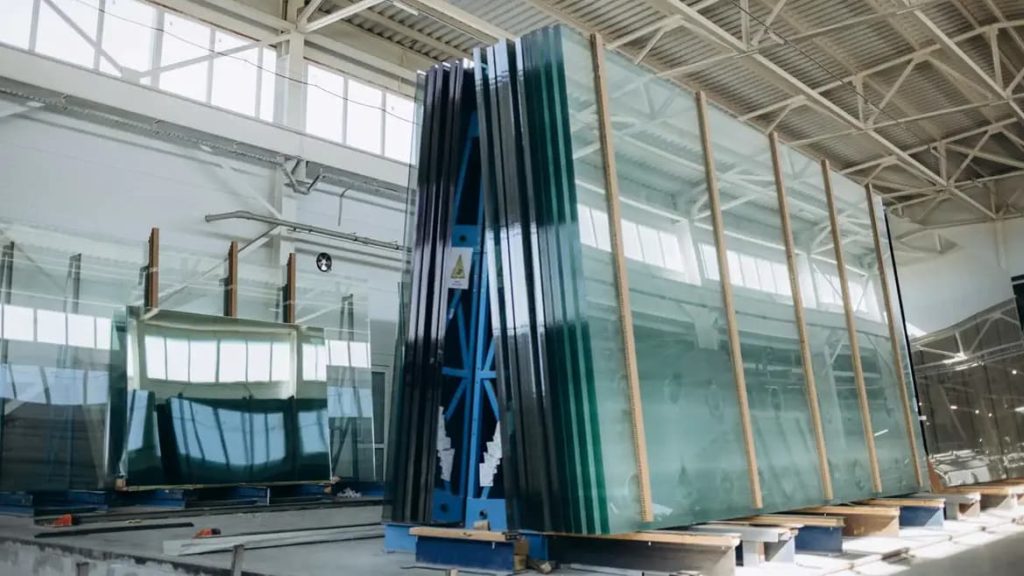The History of Glass Windows
When were windows invented, and how important are they to modern construction? We discuss the history of glass windows and how they’ve changed over the years.
Sheet glass is a versatile glass characterised by its flat,thin, and uniform appearance. Due to its smooth and distortion-free surface,sheet glass is suitable for various applications in architecture, construction,automotive, and numerous industrial sectors.
This versatility makes sheet glass perfect for buildings' windows, doors, and facades to windshields and windows in vehicles. Join us, a trusted glass company in Auckland, as we go behind the scenes to uncover how sheet glass is made. This guide will help you understand the complexities behind this fascinating material used in everyday life.
Typically, sheet glass comprises sand, soda ash (sodium carbonate), and limestone, often blended with small amounts of other additives for specific properties.
Sand: High-quality silica sand is the primary ingredient, providing the glass's basic structure and clarity. It's sourced from deposits or quarries and requires cleaning and refining to remove impurities.
Soda Ash (Sodium Carbonate): Thismaterial acts as a flux, lowering the melting point of the mixture. It also contributes to the glass's stability and durability. Soda ash is obtained through the mining of trona ore or chemical processes.
Limestone: Calcium carbonate, derived from limestone, aids in stabilising the glass and preventing its reaction with atmospheric moisture over time. Limestone is usually sourced from quarries.
The glass may include other additives, such as dolomite orcullet (recycled glass shards). Precise blending of these raw materials iscritical, as it determines the glass's chemical composition, transparency,strength, and other properties.
The furnace is the heart of glass manufacturing, transforming raw materials into molten glass. It operates at extremely high temperatures, typically exceeding 1,500°C (2,732°F). The raw materials are carefully measured and fed into the melting tank, where they combine and undergo a series of chemical reactions. These reactions fuse the raw materials into a homogeneous liquid mass. Impurities and gases are released during this process and carefully managed to ensure the glass's desired quality.
The molten glass liquid then exits the furnace and is gently poured onto a bath of molten tin, also known as the float glass technique. The tin's characteristics prevent the glass from mixing with it, creating a uniform surface with minimal distortions. The continuous glass ribbon is then guided through controlled cooling processes to stabilise it further and prevent internal stresses. The process creates a perfectly flat and smooth glass sheet, the basis for many glass applications today.

Cutting is crucial in shaping sheet glass into desired dimensions for application. There are various methods of cutting sheet glass, such as:
Manual Cutting: Skilledglassworkers use tools like diamond-tipped cutters to score the glass along thedesired cutting line. The glass is then gently broken along the score line.
Mechanical Cutting: Automated machines equipped with diamond or carbide cutting wheels can precisely cut sheets of glass according to programmed dimensions.
Laser Cutting: Advanced laser technology can make intricate and precise cuts on glass surfaces.
Once cut, the glass undergoes rigorous quality control to identify and address defects. Defective pieces with imperfections such as air bubbles, chips, scratches, or variations in thickness are rejected to maintain the highest quality standards. In some cases, if only a portion of a sheet has defects, salvageable sections are cut out from the defective parts, helping minimise waste and maximise the utility of the glass. The remaining sections, if not salvageable, are usually recycled.
Depending on the desired effect, glaziers can configure your sheet glass into different specialised types. For example, Low-E glass is created by applying a thin, transparent coating typically made of metal or metal oxide layers to the surface. The coating reflects infrared (heat)radiation while visible light can still pass through. Laminated glass is created by sandwiching a layer of plastic (usually polyvinyl butyral) between two or more layers of glass. After forming the glass layers, they are assembled with the interlayer and then heated and pressed under high pressure, creating a glass product with enhanced safety and security properties.
Specialised glass types require distinct processing steps to achieve their unique properties. These steps typically occur post-sheet glass formation, tailoring the glass for specific applications such as energy efficiency, solar control, privacy, or safety.
Located in West Auckland, our glaziers are some of New Zealand’s best! From premium float glass to toughened safety glass units, we produce high-quality glass and glazing solutions in-house, perfect for all your project needs and requirements. To learn more about our glass products and range of services, don't hesitate to contact our friendly team today!
When were windows invented, and how important are they to modern construction? We discuss the history of glass windows and how they’ve changed over the years.
Evolutions in modern glass are giving homeowners a lot to think about these days. You can now choose windows that keep your house warmer, reduce the UV radiation that makes it inside, and even eliminate noise pollution. If you’re looking into replacing your windows and you’re wondering where to start, this is the blog post […]
Are you looking for a unique window solution that will take your home design to the next level? We cover 5 inspiring window shapes for your next upgrade.